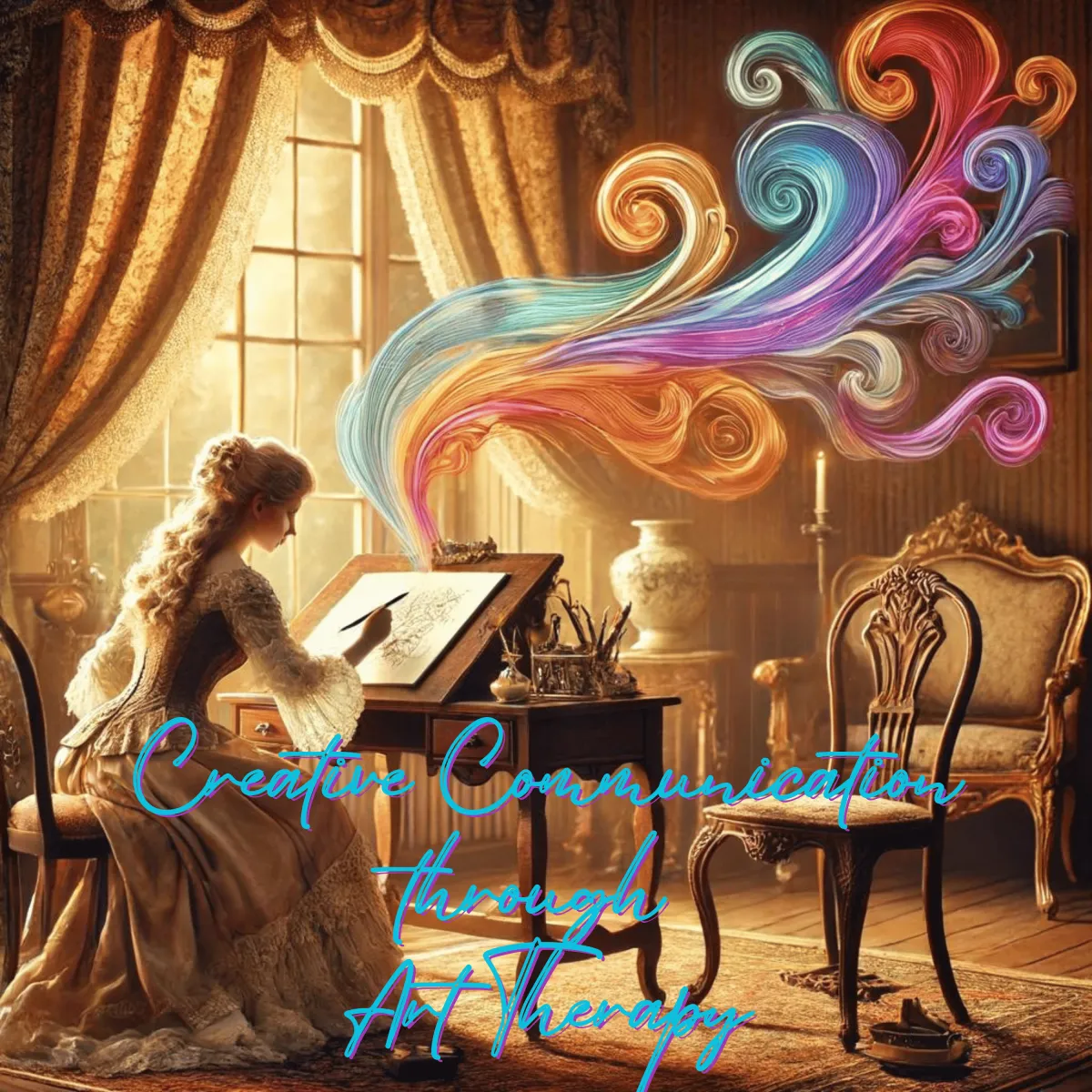
Art Therapy: Empowering Neurodivergent Individuals Through Visual Communication
Art therapy has long been recognized as a powerful tool for self-expression and healing. For neurodivergent individuals, who often experience the world in unique and varied ways, art therapy offers a vital avenue for communication that transcends traditional verbal methods. This blog explores how art therapy can empower neurodivergent adults to communicate through images, providing a natural and organic process that aligns with their cognitive and sensory experiences.
The Power of Visual Communication
Neurodivergent individuals, including those with autism, ADHD, and other cognitive variations, often find verbal communication challenging because of turn-of-phrases, sarcasm, and misunderstandings. Traditional language can be limiting, as it requires the translation of complex internal experiences into words that may not fully capture their depth or nuance. Art therapy offers an alternative by allowing individuals to express themselves visually, bypassing the constraints of verbal language.
Research has shown that visual thinking is a common trait among many neurodivergent individuals. For instance, Temple Grandin, a prominent neurodivergent advocate and academic, has often spoken about her ability to think in pictures rather than words. This mode of thinking can be harnessed in art therapy to facilitate a more authentic and comfortable form of communication.
Art Therapy as a Therapeutic Modality
I've had my own experience with using art as my primary means of communication when I struggle to translate my thoughts into words. I use art nearly every day in some form, often it's for my own processing and integrating the work I do as a therapist. I often create art while processing the deep trauma work I do with some clients; this form of art-making is called response art.
As a seasoned art therapist working with neurodivergent adults, I have also witnessed firsthand the transformative power of art therapy. The process involves using various artistic mediums—such as painting, drawing, sculpture, and collage—to help clients explore their identities and communicate their inner experiences.
Art therapy sessions are typically client-centered, allowing individuals to choose their preferred materials and methods. This autonomy is crucial for neurodivergent clients, who may have specific sensory preferences and aversions. By creating a safe and supportive environment, art therapists can encourage clients to express themselves freely and authentically.
At FlowArt, I'm not the only art therapist. Alli and Julian are also trained art therapists and hold their Provisional Registered Art Therapist credentials. If you have an interest in trying out art therapy in your own therapy work, we'd love to welcome you into the practice.
Exploring Identity Through Art
For neurodivergent adults, art therapy can be a profound tool for exploring and affirming their identities. Many clients come to therapy with a history of masking or camouflaging their true selves to fit into neurotypical expectations. Art therapy provides a space where they can unmask and explore their identities without judgment.
Through the creation of visual art, clients can depict their experiences, emotions, and perspectives in ways that feel natural and intuitive. For example, a client might use color, shape, and texture to represent their sensory experiences or emotional states. These visual representations can then serve as a starting point for further exploration and discussion within the therapeutic relationship.
Case Study: Visual Narratives
Consider the case of a client named Alex (pseudonym), a neurodivergent adult with autism. Alex found verbal communication overwhelming and often felt misunderstood in traditional talk therapy. During art therapy sessions, Alex was encouraged to create visual narratives using collage and mixed media. Through these artworks, Alex could express complex emotions and experiences that were difficult to articulate verbally.
One of Alex's collages depicted a series of fragmented images representing different aspects of their identity. This visual narrative allowed Alex to convey a sense of fragmentation and the struggle to integrate various parts of their self-concept. By discussing the artwork with the therapist, Alex could gain insights and work towards a more cohesive sense of identity.
Theoretical Foundations
The theoretical foundations of art therapy support its efficacy for neurodivergent individuals. According to Jungian psychology, art can access the unconscious mind, allowing individuals to express thoughts and feelings that are not readily accessible through verbal language (Jung, 1964). Additionally, the work of art therapists such as Cathy Malchiodi emphasizes the importance of visual expression in accessing and processing trauma, emotions, and identity (Malchiodi, 2003).
Conclusion
Art therapy offers neurodivergent individuals a powerful and affirming way to communicate and explore their identities. By harnessing the natural affinity for visual thinking and expression, art therapy provides a therapeutic modality that aligns with the cognitive and sensory experiences of neurodivergent clients. As we continue to embrace and understand neurodiversity, art therapy stands out as a vital tool in supporting the mental health and well-being of neurodivergent individuals. If art therapy is something you'd be interested in weaving into your therapy, feel free to reach out and I'd be happy to tell you more about how it could work for you!
References
Grandin, T. (2006). Thinking in Pictures, Expanded Edition: My Life with Autism. Vintage.
Jung, C. G. (1964). Man and His Symbols. Dell.
Malchiodi, C. A. (2003). Handbook of Art Therapy. Guilford Press.
